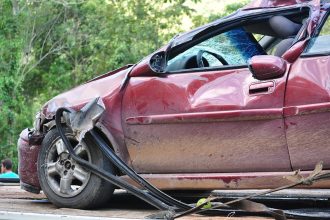Vehicular manslaughter is a grave charge that can stem from tragic accidents on the road. If you or a loved one are facing such charges, it’s crucial to know what to expect during a trial. This article breaks down the various stages of a vehicular manslaughter trial, helping you understand the process and prepare accordingly.
Initial Investigation and Charges
Once an accident resulting in death occurs, law enforcement agencies will conduct a thorough investigation. This includes examining the scene, collecting evidence, and interviewing witnesses. Based on their findings, they may recommend vehicular manslaughter charges to the prosecutor. The prosecutor then reviews the evidence and decides whether to file formal charges.
Arraignment
The first court appearance is known as the arraignment. During this stage, the defendant hears the charges read aloud and is asked to enter a plea—usually ‘guilty,’ ‘not guilty,’ or ‘no contest.’ The judge may also set bail and schedule future court dates. This is a crucial moment to secure legal representation if you haven’t done so already.
Pre-Trial Motions and Discovery
Before the trial begins, both the defense and prosecution will engage in discovery, exchanging evidence and information pertinent to the case. Pre-trial motions are also filed at this stage, addressing various legal issues like the admissibility of evidence or requests to dismiss the case. These motions can significantly impact the trial’s trajectory. Given the complexity of vehicular manslaughter cases, having a well-informed legal team is essential. Consulting a vehicular manslaughter lawyer can provide invaluable guidance and support throughout this intense period, ensuring that you understand your rights and options.
Plea Bargaining
In many cases, both parties may engage in plea bargaining. The defendant may agree to plead guilty to a lesser charge in exchange for a reduced sentence. This phase requires expert negotiation skills and a deep understanding of the case’s strengths and weaknesses. If an agreement is reached, the trial may be avoided entirely.
Jury Selection
If the case proceeds to trial, the next step is jury selection. Both the defense and prosecution will question potential jurors to ensure an impartial jury is seated. They may dismiss certain jurors through ‘peremptory challenges’ or ‘for cause’ challenges. The goal is to assemble a fair jury that can objectively weigh the evidence.
The Trial
Once the jury is selected, the trial begins. This process typically includes opening statements, witness testimonies, cross-examinations, and closing arguments. The prosecution presents its case first, with the defense following. Each side will attempt to persuade the jury of their arguments, using evidence and expert testimonies to bolster their positions.
Media Coverage
High-profile vehicular manslaughter cases often attract significant media attention. Media coverage can impact public opinion and, in some cases, the trial itself. Both the defense and prosecution need to be mindful of this coverage, as it can sway potential jurors and affect the overall atmosphere of the courtroom. Legal teams may request certain measures to mitigate the influence of media on the trial, such as sequestering the jury.
Expert Witnesses and Evidence
In many vehicular manslaughter cases, expert witnesses play a crucial role. These experts might include accident reconstruction specialists, medical examiners, or forensic scientists. Their testimonies can provide scientific and technical insights that help the jury understand complex aspects of the case, such as the cause of the accident or the extent of injuries sustained.
Deliberation and Verdict
After closing arguments, the jury enters deliberation. During this phase, jurors discuss the case in private, considering all evidence and testimonies presented. They must reach a unanimous decision to convict or acquit. Deliberation can take hours or even days, reflecting the complexity and gravity of the case. Once a verdict is reached, it is read aloud in court.
Impact Statements
During the trial, impact statements from the victim’s family and friends might also be heard. These statements aim to convey the emotional and psychological impact of the loss to the jury. While they don’t serve as direct evidence, they can influence the jury’s perception of the case and add a personal dimension to the legal proceedings.
Sentencing
If the defendant is found guilty, the case moves to the sentencing phase. The judge will consider various factors, including the severity of the crime, prior criminal record, and any mitigating circumstances. Sentences for vehicular manslaughter can range from probation to lengthy prison terms. Both the defense and prosecution may present arguments or evidence to influence the judge’s decision.
Appeals
A conviction is not necessarily the end of the road. The defendant has the right to appeal the verdict or the sentence, arguing that legal errors were made during the trial. Appeals must be based on specific grounds, such as misconduct or improperly admitted evidence. If successful, an appeal can lead to a new trial or a reduced sentence.
Facing a vehicular manslaughter trial is undeniably challenging, filled with legal complexities and emotional turmoil. However, understanding what to expect at each stage of the process can help alleviate some of the uncertainty. Whether you’re directly involved or supporting someone who is, being informed is the first step towards navigating this difficult journey.













